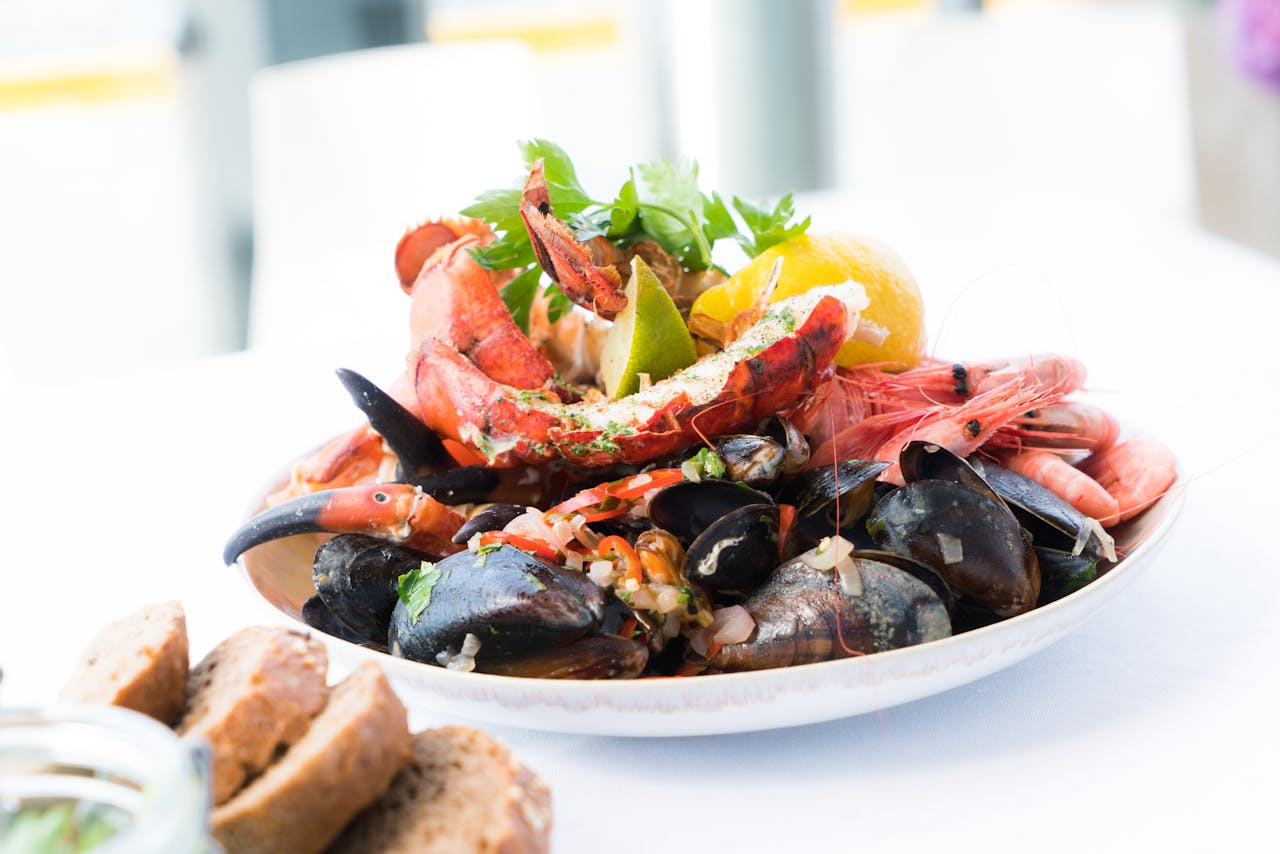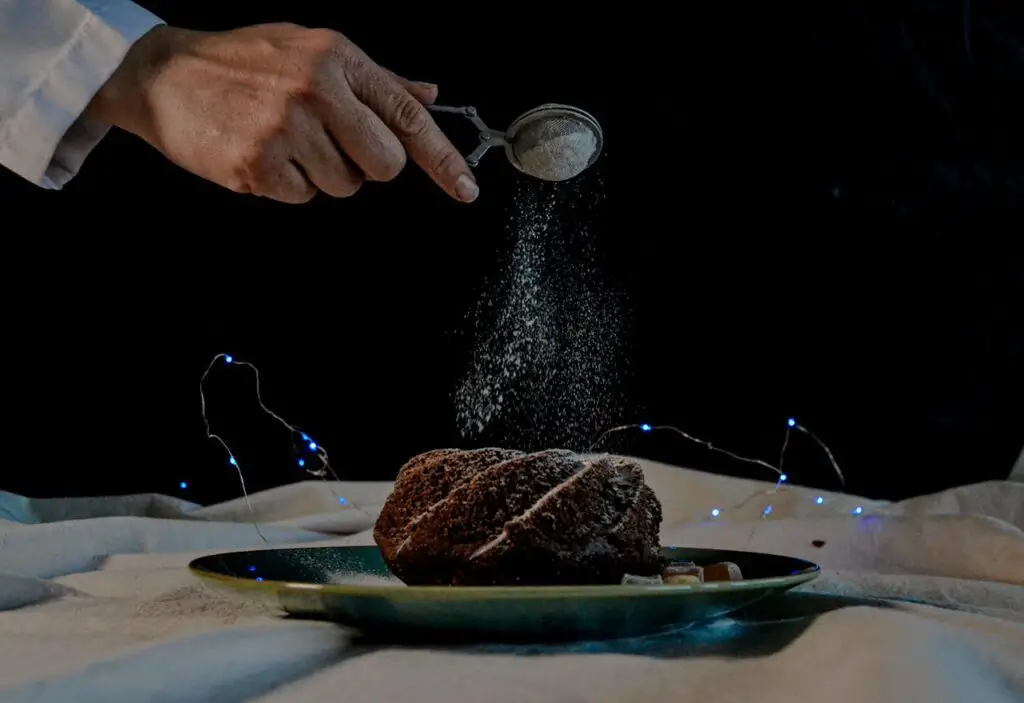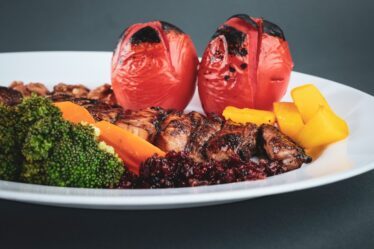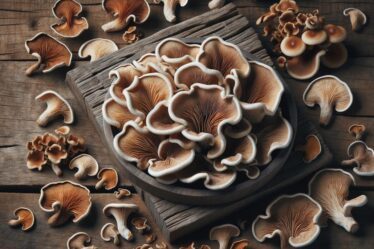
Crab cakes are a beloved seafood dish that has been enjoyed for centuries. They have a rich history and are considered a classic dish in many coastal regions. The first crab cakes appeared in the Chesapeake Bay region of the United States, where local fishermen made use of the plentiful fresh crab meat at their disposal.
Crab cakes have become popular worldwide due to their delicious flavor and versatility. They can be served as an appetizer, a main course, or even as a sandwich filling. The combination of tender crab meat, breadcrumbs, and flavorful seasonings makes for a mouthwatering dish that is loved by seafood enthusiasts everywhere.
Key Takeaways
- Crab cakes are a classic seafood dish that can be enjoyed in many different ways.
- The best crab meat for making crab cakes is fresh, lump crab meat.
- Simple ingredients like breadcrumbs, mayonnaise, and spices can make a delicious crab cake recipe.
- Use a cookie cutter or mold to make perfectly shaped crab cakes every time.
- Baked crab cakes are a healthier option than fried, but both can be delicious.
- Creative twists on classic crab cake recipes include adding avocado or using different types of seafood.
- Pair crab cakes with delicious sides like coleslaw or roasted vegetables.
- Store and freeze crab cakes properly to ensure they stay fresh.
- Low-fat and gluten-free crab cake recipes are available for those with dietary restrictions.
- Impress your guests with gourmet crab cake recipes that include ingredients like truffle oil and caviar.
The Best Crab Meat for Making Crab Cakes
When it comes to making crab cakes, the type of crab meat you use can make all the difference in the final result. There are several types of crab meat available, including lump crab meat, claw meat, and backfin meat.
Lump crab meat is considered the highest quality and most desirable type of crab meat for making crab cakes. It consists of large, whole pieces of crab meat that are taken from the body of the crab. Lump crab meat has a sweet and delicate flavor that pairs perfectly with the other ingredients in a crab cake.
Claw meat is another option for making crab cakes. It is taken from the claws of the crab and has a slightly stronger flavor compared to lump crab meat. Claw meat is less expensive than lump crab meat, making it a more budget-friendly option for those who still want to enjoy delicious crab cakes.
Backfin meat is a combination of lump and claw meat and is also commonly used in making crab cakes. It has a slightly flakier texture compared to lump crab meat but still provides great flavor.
When it comes to buying high-quality crab meat for making crab cakes, it is best to purchase it fresh from a reputable seafood market or fishmonger. Look for crab meat that is moist, firm, and free of any off-putting odors. If fresh crab meat is not available, you can also opt for canned crab meat, but be sure to drain it well before using.
Simple Ingredients for a Delicious Crab Cake Recipe
Making delicious crab cakes doesn’t require a long list of ingredients. In fact, the simpler the recipe, the better, as it allows the flavor of the crab meat to shine through. Here are the basic ingredients needed for a classic crab cake recipe:
Crab meat: As mentioned earlier, lump crab meat is the best choice for making crab cakes.
Breadcrumbs: Use fresh breadcrumbs or panko breadcrumbs for added texture.
Mayonnaise: This helps bind the ingredients together and adds moisture to the crab cakes.
Dijon mustard: Adds a tangy flavor to the crab cakes.
Worcestershire sauce: Provides a savory and slightly tangy taste.
Old Bay seasoning: A classic seafood seasoning that enhances the flavor of the crab meat.
Salt and pepper: To taste.
Fresh herbs: Optional, but adding chopped parsley or chives can add freshness to the crab cakes.
Using fresh ingredients is crucial when making crab cakes. Be sure to use fresh crab meat and avoid using stale breadcrumbs or expired condiments. The quality of the ingredients will greatly affect the taste and texture of the final dish.
When preparing the ingredients, be sure to pick through the crab meat to remove any shells or cartilage. Gently mix all the ingredients together in a bowl, being careful not to break up the lumps of crab meat too much. The mixture should hold together when shaped into patties.
How to Make Perfectly Shaped Crab Cakes Every Time
| Ingredient | Amount |
|---|---|
| Fresh crab meat | 1 pound |
| Panko breadcrumbs | 1 cup |
| Mayonnaise | 1/4 cup |
| Dijon mustard | 1 tablespoon |
| Worcestershire sauce | 1 teaspoon |
| Old Bay seasoning | 1 teaspoon |
| Egg | 1 large |
| Butter | 2 tablespoons |
| Green onions, chopped | 2 tablespoons |
| Lemon wedges | For serving |
Shaping crab cakes can be a bit tricky, but with the right technique, you can achieve perfectly shaped patties every time. Here is a step-by-step guide to shaping crab cakes:
1. Divide the crab cake mixture into equal portions. This will ensure that all the crab cakes are the same size and cook evenly.
2. Take a portion of the mixture and gently shape it into a ball using your hands. Be careful not to overwork the mixture, as this can result in dense crab cakes.
3. Flatten the ball into a patty shape, about 1 inch thick. Use your hands to smooth out any rough edges and ensure that the patty is evenly shaped.
4. Place the shaped crab cake onto a baking sheet lined with parchment paper or a greased baking dish. Repeat the process with the remaining portions of the mixture.
5. If desired, refrigerate the crab cakes for at least 30 minutes before cooking. This will help them hold their shape better during cooking.
Common mistakes to avoid when shaping crab cakes include making them too thick or too thin, not properly shaping them into patties, and handling the mixture too roughly. Taking your time and being gentle with the mixture will result in perfectly shaped crab cakes that hold together well during cooking.
Baked vs. Fried Crab Cakes: Which is Better?
When it comes to cooking crab cakes, there are two main methods: baking and frying. Both methods have their pros and cons, and the choice ultimately depends on personal preference.
Baking crab cakes is a healthier option, as it requires less oil and results in a lighter dish. Baking also allows the flavors of the crab meat to shine through without being overpowered by oil or grease. To bake crab cakes, preheat your oven to 375°F (190°C) and place the shaped crab cakes on a greased baking sheet or parchment paper-lined baking dish. Bake for about 15-20 minutes, or until the crab cakes are golden brown and cooked through.
Frying crab cakes, on the other hand, results in a crispy exterior and a moist and tender interior. Frying adds a rich flavor and a satisfying crunch to the crab cakes. To fry crab cakes, heat oil in a skillet over medium-high heat. Carefully place the shaped crab cakes into the hot oil and cook for about 3–4 minutes per side, or until golden brown and cooked through.
The choice between baking and frying crab cakes depends on personal preference and dietary restrictions. If you prefer a lighter dish or are watching your calorie intake, baking is the way to go. If you want a more indulgent and flavorful experience, frying is the way to achieve that crispy exterior.
Creative Twists on Classic Crab Cake Recipes

While classic crab cakes are delicious on their own, there are many ways to add unique flavors and ingredients to elevate this classic dish. Here are some creative twists on traditional crab cake recipes:
1. Spicy Crab Cakes: Add some heat to your crab cakes by incorporating diced jalapenos or red pepper flakes into the mixture. The spicy kick pairs well with the sweetness of the crab meat.
2. Asian-Inspired Crab Cakes: Give your crab cakes an Asian twist by adding ingredients like soy sauce, ginger, garlic, and sesame oil to the mixture. Top them with a drizzle of sweet chili sauce or serve them with a side of soy dipping sauce.
3. Mediterranean Crab Cakes: Add Mediterranean flavors to your crab cakes by mixing in ingredients like feta cheese, sun-dried tomatoes, Kalamata olives, and fresh herbs like basil or oregano.
4. Crab Cake Sliders: Instead of shaping the crab cake mixture into large patties, make smaller sliders that can be served as appetizers or as a fun twist on a classic sandwich. Serve them on mini buns with a dollop of tartar sauce or aioli.
5. Crab Cake Benedict: Turn your crab cakes into an elegant brunch dish by serving them on top of toasted English muffins, topped with poached eggs and hollandaise sauce.
Experimenting with different ingredients and flavors can take your crab cakes to the next level and add a unique twist to this classic dish.
Serving Suggestions: Pairing Crab Cakes with Delicious Sides
Crab cakes are delicious on their own, but they can be even more enjoyable when paired with the right side dishes. Here are some side dishes that complement crab cakes:
1. Coleslaw: The creamy and tangy flavors of coleslaw provide a refreshing contrast to the richness of the crab cakes. Opt for a classic cabbage-based coleslaw or try a variation with ingredients like apples, carrots, or cranberries for added texture and flavor.
2. Corn on the Cob: Sweet and juicy corn on the cob is a classic summer side dish that pairs well with crab cakes. Serve it grilled or boiled and slathered with butter for a simple and satisfying accompaniment.
3. Roasted Potatoes: Crispy roasted potatoes seasoned with herbs like rosemary or thyme make for a hearty and flavorful side dish that complements the crab cakes perfectly.
4. Salad: A light and refreshing salad can balance out the richness of the crab cakes. Opt for a simple green salad with a tangy vinaigrette or get creative with ingredients like avocado, citrus fruits, or roasted vegetables.
5. Rice Pilaf: Serve your crab cakes with a flavorful rice pilaf to add substance to the meal. The aromatic flavors of the rice will complement the delicate flavors of the crab cakes.
When pairing side dishes with crab cakes, it’s important to consider the overall balance of flavors and textures. Choose sides that provide contrast to the richness of the crab cakes and enhance the overall dining experience.
Tips for Storing and Freezing Crab Cakes
If you have leftover crab cakes or want to make a large batch in advance, it’s important to know how to store and freeze them properly to maintain their quality. Here are some tips for storing and freezing crab cakes:
1. Storing Leftover Crab Cakes: If you have leftover crab cakes, store them in an airtight container in the refrigerator for up to 3 days. To reheat, place them in a preheated oven at 350°F (175°C) for about 10-15 minutes, or until heated through.
2. Freezing Crab Cakes: To freeze crab cakes, place them on a baking sheet lined with parchment paper and freeze until firm. Once frozen, transfer the crab cakes to a freezer-safe container or zip-top bag. They can be stored in the freezer for up to 3 months.
3. Reheating Frozen Crab Cakes: To reheat frozen crab cakes, preheat your oven to 375°F (190°C). Place the frozen crab cakes on a greased baking sheet or parchment paper-lined baking dish and bake for about 20-25 minutes, or until heated through and golden brown.
When reheating crab cakes, it’s important to do so slowly and evenly to prevent them from drying out or becoming overcooked. Avoid using the microwave, as it can result in soggy crab cakes.
Healthier Crab Cake Options: Low-Fat and Gluten-Free Recipes
If you’re looking for healthier alternatives to traditional crab cake recipes, there are plenty of options available. Here are some low-fat and gluten-free crab cake recipes:
1. Low-Fat Crab Cakes: To make low-fat crab cakes, replace some or all of the mayonnaise with Greek yogurt or low-fat sour cream. You can also use whole wheat breadcrumbs instead of regular breadcrumbs for added fiber.
2. Gluten-Free Crab Cakes: To make gluten-free crab cakes, replace the breadcrumbs with gluten-free breadcrumbs or crushed gluten-free crackers. You can also use almond flour or cornmeal as a gluten-free alternative.
3. Paleo Crab Cakes: For those following a paleo diet, replace the breadcrumbs with almond flour or crushed pork rinds. Use paleo-friendly mayonnaise or make your own using avocado oil and egg yolks.
4. Vegan Crab Cakes: If you’re looking for a plant-based alternative, you can make vegan crab cakes using ingredients like hearts of palm, artichoke hearts, or jackfruit as a substitute for the crab meat. Combine these ingredients with vegan mayonnaise, breadcrumbs, and seasonings for a delicious vegan version of crab cakes.
When making healthier crab cakes, it’s important to choose ingredients that are low in fat and free from gluten if necessary. Experimenting with different substitutions can help you create a healthier version of this classic dish without sacrificing flavor.
Impress Your Guests with These Gourmet Crab Cake Recipes
If you’re looking to impress your guests or elevate your crab cake game, there are plenty of gourmet recipes to try. Here are some gourmet crab cake recipes for special occasions:
1. Lobster-Stuffed Crab Cakes: Take your crab cakes to the next level by stuffing them with chunks of lobster meat. The combination of sweet crab and rich lobster creates a decadent and luxurious dish.
2. Truffle Crab Cakes: Add a touch of elegance to your crab cakes by incorporating truffle oil or truffle butter into the mixture. The earthy and aromatic flavors of truffle pair beautifully with the delicate taste of the crab meat.
3. Crab Cake Eggs Benedict with Hollandaise Foam: Elevate your brunch game by serving crab cakes on top of toasted English muffins, topped with poached eggs and a light and airy hollandaise foam. The foam adds a modern twist to the classic dish and creates a visually stunning presentation.
4. Crab Cake Tower with Avocado Salsa: Impress your guests with a crab cake tower layered with avocado salsa and drizzled with a tangy citrus vinaigrette. This gourmet presentation is sure to wow your guests and make for a memorable dining experience.
When creating gourmet crab cake recipes, don’t be afraid to experiment with unique ingredients and presentation techniques. The key is to combine flavors and textures in a way that enhances the natural sweetness of the crab meat and creates a visually stunning dish.
In conclusion, crab cakes are a classic seafood dish that has stood the test of time. They are loved for their delicious flavor, versatility, and ability to be enjoyed in various settings. Whether you prefer them baked or fried, with traditional ingredients or unique twists, crab cakes are sure to satisfy any seafood lover’s cravings. So go ahead and try your hand at making these delectable treats – your taste buds will thank you!
If you’re a fan of crab meat cakes recipes, you’ll love this article on Flavorful Sips that decodes the delights of orange drinks. Discover the refreshing and tangy flavors of various orange-based beverages that perfectly complement the succulent crab meat cakes. From citrusy mocktails to zesty cocktails, this article will guide you through the world of orange drinks and help you find the perfect pairing for your next crab meat cake feast. Check it out here!



